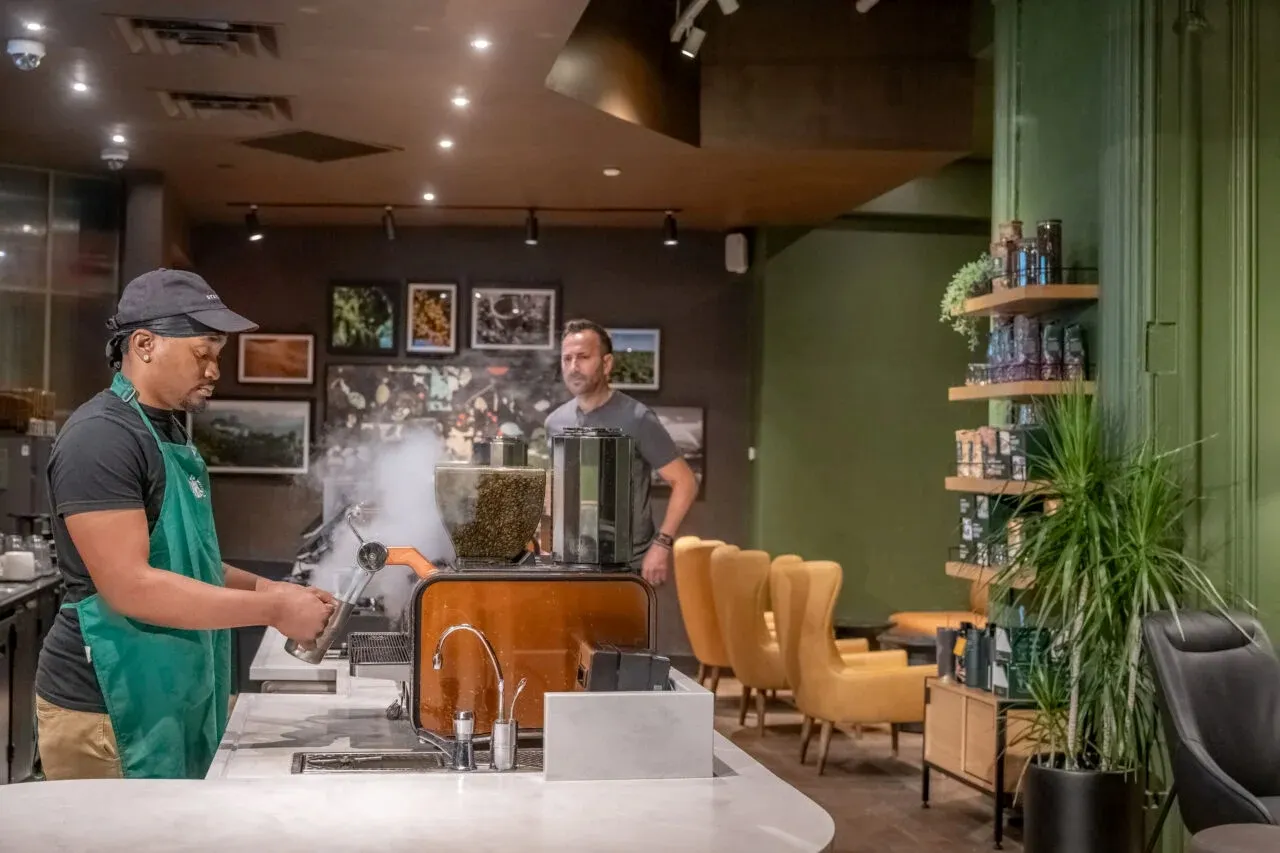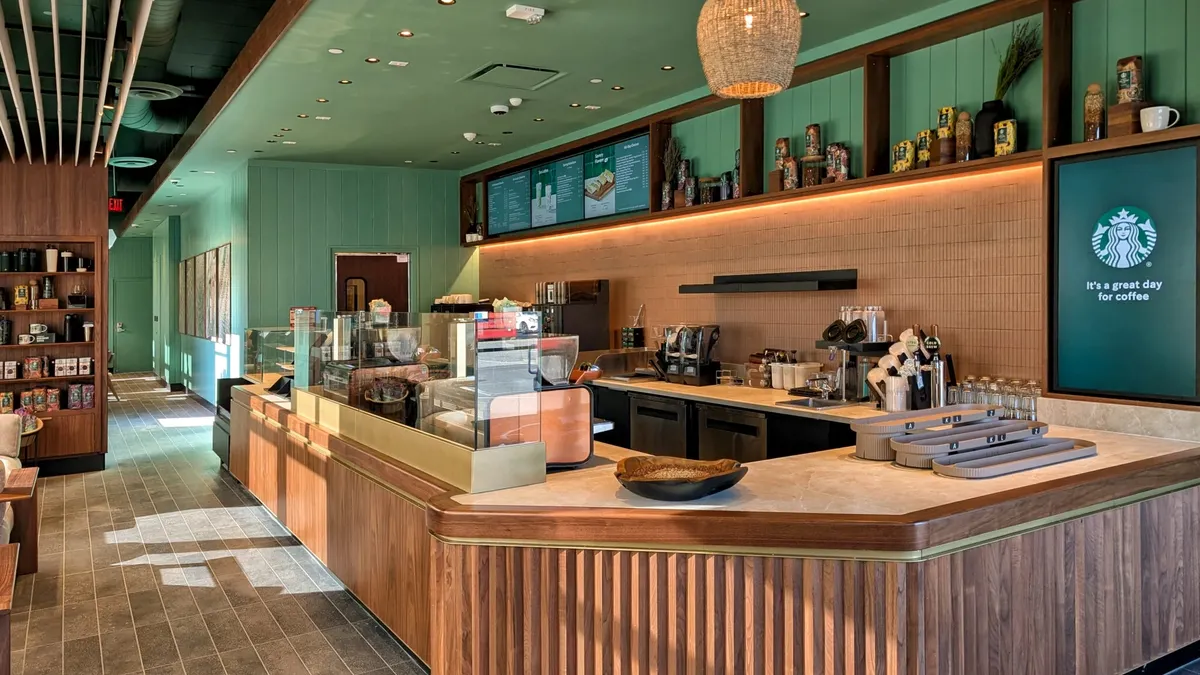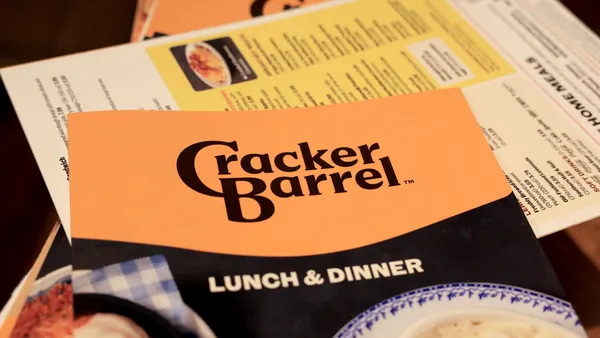Dive Brief:
- Starbucks on Friday showcased the layout changes and design principles behind its cafe redesign, sharing images of several renovated cafes. A handful of stores in New York City and Southern California have undergone renovations.
- The design reveal is a significant step forward for CEO Brian Niccol’s ongoing effort to restore the brand’s coffeehouse identity. Upwards of 1,000 stores will be remodeled by the end of 2026.
- Starbucks is increasing its seating, with a focus on softer and cozier seats, and is adding a warmer color and texture palette with motifs that reflect local communities. The chain has also redesigned its espresso bar — to give customers a “front-row seat to the craft behind every cup” — and is adding risers for mobile pickup orders.
Dive Insight:
The brand said early remodels that tested its design principles have resulted in consumers staying longer, visiting more often and sharing positive feedback. Such results are welcome for the chain, which has moved away from temporary discounts as a frequency driver.
The aesthetic goal of the redesign is to make the cafes feel like “a living room outside your home,” the brand said. To that end, “Starbucks is bringing back thousands of seats that were removed in recent years and will create a place where people can comfortably gather,” according to the announcement.
The changes to color, texture and decor attempt to create a sense of warmth and familiarity, while incorporating elements that bear some sort of connection to the local area. A coffeehouse in East Hampton, New York, has a compass on the gallery wall, the chain said. The compass may be a nod to the small coastal town’s nautical history.

There are experiential changes beyond the aesthetic shifts, too. Starbucks said “more dedicated open spaces will help to reduce congestion and make a clearer distinction between customers who are staying or picking up an order.” This could help the brand balance the operational and atmospheric demands of a digital-forward business and local cafe vibes.
On the brand’s most recent earnings call, the company estimated that the renovations will cost around $150,000 per store — adding up to $150 million by the end of 2026.
Starbucks will incorporate these new design priorities into new construction, with cafes prioritizing the lobby and seating options. However, the chain is still looking to decrease footprints, which will result in smaller spaces with a warmer atmosphere. The first such new build is expected to open next year, according to the statement.














